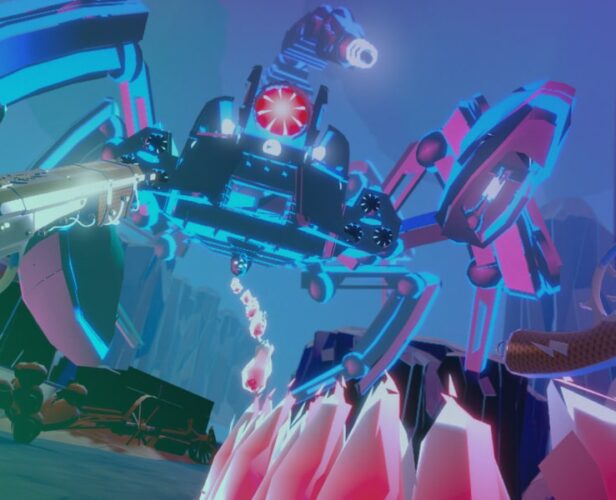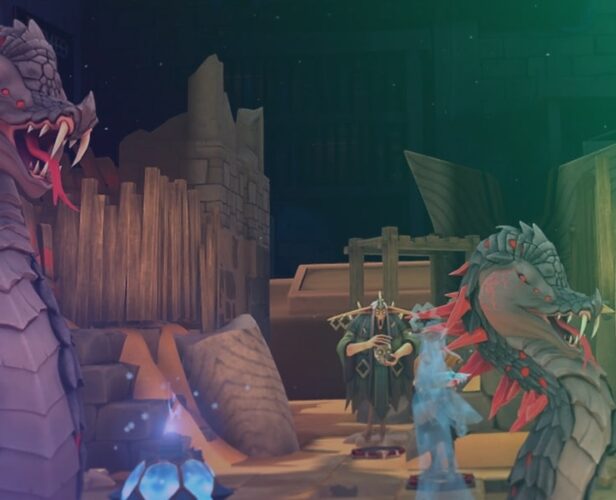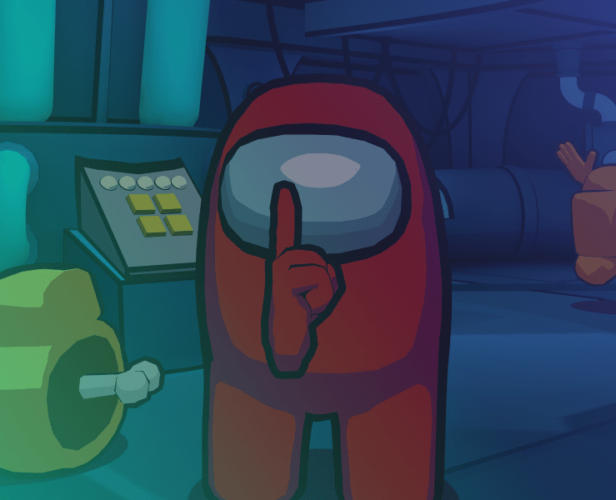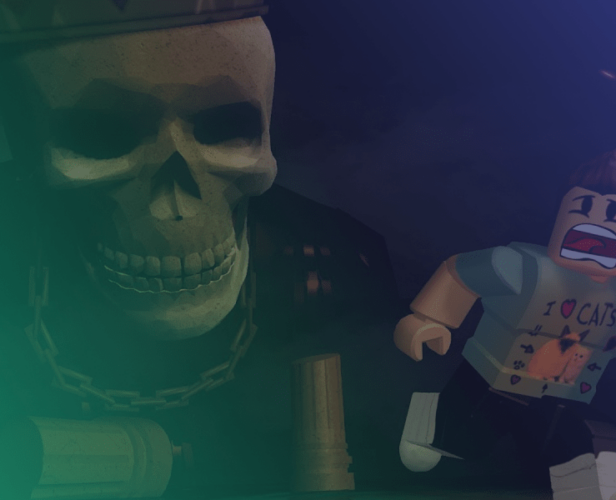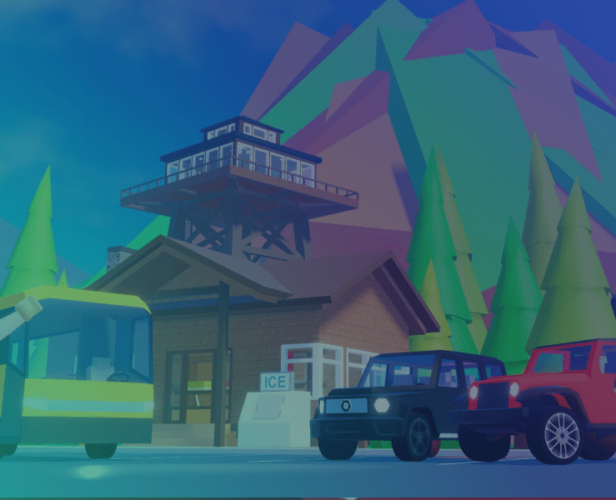Category
Interviews
#Interviews
Kid-Focused Design: The Secret to Engaging 750M Young Gamers
PK XD has over 500 million downloads on Android alone. It gets 30 million views on YouTube every week. And their average session length is 25 minutes a session, with people playing around an hour and a half a day. So what's the secret behind their success? Here's what we know.
#Interviews
Cloudhead Games’ advice on jumping into the VR Market
In the next five years, almost a third of people will have a headset of some description, and there’ll be about 2.5 billion players. But how do you make the shift to this incredibly lucrative new area? We asked Cloudhead Games.
#Interviews
Why Resolution Games believes mixed reality is a new frontier
Augmented and virtual reality are steadily on the rise. And game developers are now seeing an opportunity to branch out and create mixed-reality experiences. We speak with one of the key players in the space, Resolution Games, to get their advice on breaking into the sector.
#Interviews
Making the leap from 100 players to 10 million
Anime Dimensions had Roblox’s best-rated launch in the platform’s history. We spoke to the founder and key developer of Albatross Games to discover how they managed to make such a monumental leap in just 60 days.
#Interviews
Among Us VR dev talks about how to create immersive worlds
VR is all about immersion. It’s about allowing players to lose themselves in more than just a game, but a new world. You have to build VR experiences the right way to make this happen. This goal is always top-of-mind for Schell Games. In this interview, we spoke to Schell Games’ Vice President of Product, Charlie Amis, to learn their story. “For VR, you want to make the player feel like they’re actually in the world you’ve created. This isn’t as true or a high priority in PC and console games. If people start to lose that sense of presence and immersion, then a lot of the reason they put the headset on is hurt. They want to go to another world or be someone new. So you need to help them feel like they’re really there and really that...
#Interviews
How to build successful VR games as a solo developer
Building video games has never been a simple task. You can have a brilliant idea for a game, but without the right skills, tools and resources, it can be near-impossible to tackle by yourself. Especially if we consider something as complicated and new as virtual reality. Not that this stopped Sergio Hidalgo. Being a one-man studio, Sergio managed to produce, release, and publish two successful VR titles. His first title, Dreadhalls, sold up to 250,000 units worldwide, and hit over 60,000 concurrent viewers on Twitch. (For comparison, Team Fortress 2’s highest was around 80,000.) While Cosmodread has had approximately 25,000 players on Steam alone. So to get his advice and learn his secrets, we sat down to hear his story and journey as a solo-game developer. Here’s what he had to say. 1. You don’t have to have it all...
#Interviews
Splitting Point: how Field Trip Z got 45M players on Roblox this year
We recently spoke with Janzen Madsen, founder at Splitting Point Studios, to get his perspective on how to develop a hit on Roblox. Splitting Point has created multiple experiences, including Field Trip Z which this year alone saw more than 45M unique players. Janzen is intimately familiar with what makes a Roblox experience a success. Roblox is an absolutely massive platform, with over 32 million experiences and 52 million active users. But making a game there is unlike making a game anywhere else. It’s much faster paced, the audience is much younger, and it’s much more tricky to design. The typical principles you might expect are quite different. 1. Don’t make it like a mobile game “Often, developers coming from the mobile gaming industry will assume that they can replicate their success by rebuilding their games on Roblox. This just...
#Interviews
Fruit Ninja dev talks porting to VR
Obsessed with making games that people will remember for a lifetime, Halfbrick decided to convert their hit title, Fruit Ninja, into a VR game. It was a natural evolution – people apparently really enjoy slicing fruit and swinging swords. After that success, they created Fruit Ninja VR 2 – adding more features and exploration to the game. “Making a game for VR is very, very different,” said Liam Potter, one of the lead gameplay programmers on Fruit Ninja VR 2. “There are a lot of things you need to take into account that you just don’t for console or mobile.” With that in mind, let’s dive into those challenges and see what Liam advises. Show players the play space early In a VR experience, it’s incredibly difficult to make sure that players are looking where you want. Gamers notoriously fail...
#Interviews
Reaching a +40M playerbase: advice from Trihex Studios
Unless you’ve been living under a rock for the last few years, you’ve probably heard of Roblox. It’s a gaming platform with over 30 million games – which they call experiences – 52 million daily active users (DAU) and 12 million creators at the time of writing. One of the keys to its success is that it makes it exceptionally easy to create and release games on its platform. We spoke with Tae Kim and Eric Park, co-founders of Trihex Studios and the minds behind Redcliff City – one of the most popular titles on Roblox which has, this year alone, amassed a community of more than 40 million unique players. During our conversation, we asked them what mobile developers could learn from Roblox and how they could make the move over to the platform. Here’s their advice. First up,...
#Interviews
How TapNation makes hit games with DataSuite
TapNation helps nurture over 80 studios to develop hit games. Data is crucial when working on any genre. But particularly when you’re making a hypercasual game. TapNation helps studios all over the world to develop and improve their games. But to do that, they need accurate data. Fast. That’s where DataSuite comes in: it’s a collection of our services to help you bring all your data together and easily plug it into your other systems. We spoke with TapNation’s VP of engineering, Kamel Haddad, to see how that works. And what they use DataSuite for. Tell us a little about TapNation and yourself Sure thing. We are TapNation. We’re a publisher based in Paris and have taken around 80 different studios worldwide under our wing. Over the last few years, we’ve had around 19 hit titles, counting over 500 million...
#Interviews
How to Build a Data Warehouse for Games from Scratch
Over our last couple of blogs around data warehouses, we’ve explained how they let you analyze data from across your portfolio and look at what insights you can gather from them. Now, we’ll dive into how to build a data warehouse. What steps do you need to take and what resources will you need? To figure this out, we’ve rounded up the costs, steps, and tools we think you’ll need to get started. Please note, that we haven’t included the cost of running an engineering department (which you’ll need), which can end up being a lot of $$$. What do I need to get started? Before you start, you’ll need to ensure you have the right people. You’ll likely need a software or data engineer, and perhaps an architect or DevOps engineer. You’ll also need to budget for tools like...
#Interviews
How will monetization models change in 2022?
Editor’s note: This article was written by the clever minds at HyperBid. Hello there. I’m Ahmet, the business director here at HyperBid. Aside from the obvious ups and downs last year, we also had some big changes in how the monetization industry works. From new models improving revenue for developers to changes on how we can collect data. So I thought it’d be useful to summarise the four big changes we’ll see in 2022. 1. The waterfall model will take a step back There are two models you can use when selling the advertising space in your game. Either you use waterfall, which methodically runs through a set list defined by you, until you get an ad bid above your defined floor price. Or you can use in-app header bidding, where you programmatically scan through every bid for the best...
#Interviews
How to Monetize Your Game With a Backend – Part 2
A few weeks ago, we went over what backends are, what you can do with them, and what kinds of monetization strategies are possible when using a backend-as-a-service. This time, we want to take this topic a step further. Now, we’ll chat about everything else your backend can do, and how to get your monetization right. Let’s dive back in. Quick recap from our last blog You can check it out if you missed our last article (or just want to brush up on your reading). But here’s the TL;DR breakdown: Your backend can handle all kinds of monetization types, including: Hard and soft currencies. Cosmetics. Loot boxes. Upgrades. Season passes and battle passes. Subscriptions. Opt-in events. DLC. And your backend matters here. They provide the ecosystem that lets your monetization both function and thrive. We’ve gone into a lot...

